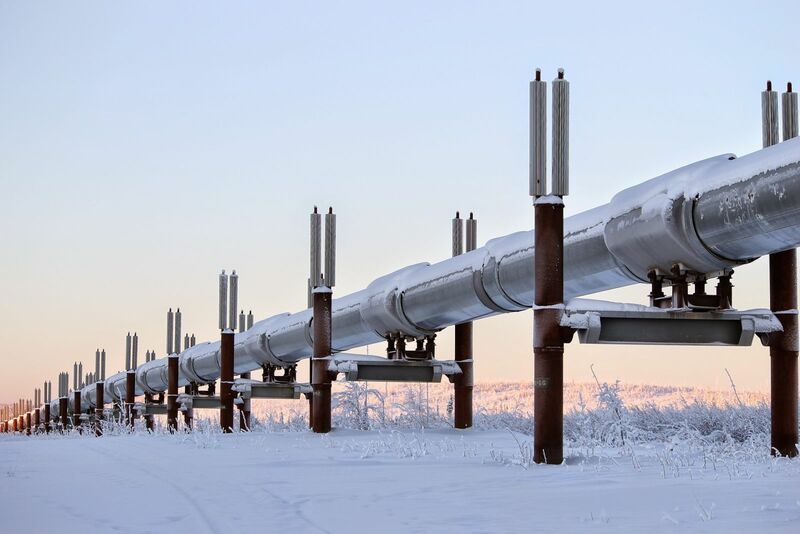
May WTI crude oil (CLK24) this morning is down -0.21 (-0.25%), and May RBOB gasoline (RBK24) is down -0.59 (-0.21%).
Crude and gasoline prices this morning are slightly lower as they consolidate this week's rally that pushed crude up to a 5-1/4 month high and gasoline to a 7-month high. Crude oil prices have underlying support from today's slide in the dollar index to a 2-week low.
Weakness in the economy of Japan, the world's fourth largest crude oil consumer, is bearish for crude oil prices after the Bank of Japan (BOJ), in today's quarterly regional economic report, downgraded its economic assessments for seven of nine Japanese regions, the most downgrades in two years.
Crude prices have carryover support from Wednesday when OPEC+, at its monthly meeting, did not recommend any changes to their existing crude output cuts, which kept about 2 million bpd of production cuts in place until the end of June. However, OPEC crude production in March rose +10,000 bpd to 26.860 million bpd, a bearish factor for oil prices as Iraq and UAE continue to pump above their production quotas.
Oil prices have support on concern that the Israel-Hamas war could more directly involve Iran after Iran vowed to retaliate for an Israel airstrike last Friday in Syria that killed top Iranian military commanders.
Crude has support from the recent Ukrainian drone attacks on Russian refineries that damaged several Russian oil processing facilities, limiting Russia's fuel exporting capacity. Bloomberg calculations show Russian refiners processed 5.03 million bpd of crude during March 14-20, down -400,000 bpd from the average for the first 13 days of March and the lowest in 10 months. JPMorgan Chase said it sees 900,000 bpd of Russian refinery capacity that could be offline "for several weeks if not months" from the attacks, adding $4 a barrel of risk premium to oil prices.
However, the disruption to Russian refiners has yet to affect Russian fuel exports because of the large number of Russian ships at sea transporting crude. Russia's fuel exports in the week to March 31 rose +270,000 bpd from the prior week to 3.74 million bpd, the year's highest level.
A decline in crude in floating storage is bullish for prices. Monday's weekly data from Vortexa showed that the amount of crude oil held worldwide on tankers that have been stationary for at least a week fell -19% w/w to 67.10 million bbl as of March 29.
The recent strength of Chinese crude oil demand is bullish for prices. Recent government data showed that China processed a record 118.76 MMT of crude in January and February, up +3% from the same time last year. Also, Chinese fuel demand jumped, with expressway passenger volumes 54% higher than 2019 levels, while airlines saw 19% more people than the pre-pandemic peak.
Crude prices have underlying support from the Israel-Hamas war and concern that all-out war might spread to Lebanon. Hezbollah and Israel have traded fire almost daily since the Israel-Hamas war erupted on October 7. Also, the US and UK have engaged in airstrikes against Houthi rebels in Yemen in retaliation for Houthi attacks on commercial shipping in the Red Sea. Attacks on commercial shipping in the Red Sea by Iran-backed Houthi rebels have forced shippers to divert shipments around the southern tip of Africa instead of going through the Red Sea, disrupting global crude oil supplies.
Wednesday's EIA report showed that (1) US crude oil inventories as of March 29 were -2.9% below the seasonal 5-year average, (2) gasoline inventories were -2.9% below the seasonal 5-year average, and (3) distillate inventories were -6.7% below the 5-year seasonal average. US crude oil production in the week ending March 29 was unchanged w/w at 13.1 million bpd, below the recent record high of 13.3 million bpd.
Baker Hughes reported last Thursday that active US oil rigs in the week ended March 29 fell by -3 rigs to 506 rigs, moderately above the 2-year low of 494 rigs posted on November 10. The number of US oil rigs has fallen over the past year from the 3-3/4 year high of 627 rigs posted in December 2022.
On the date of publication, Rich Asplund did not have (either directly or indirectly) positions in any of the securities mentioned in this article. All information and data in this article is solely for informational purposes. For more information please view the Barchart Disclosure Policy here.






